7 Common Weeds with Identification Pictures
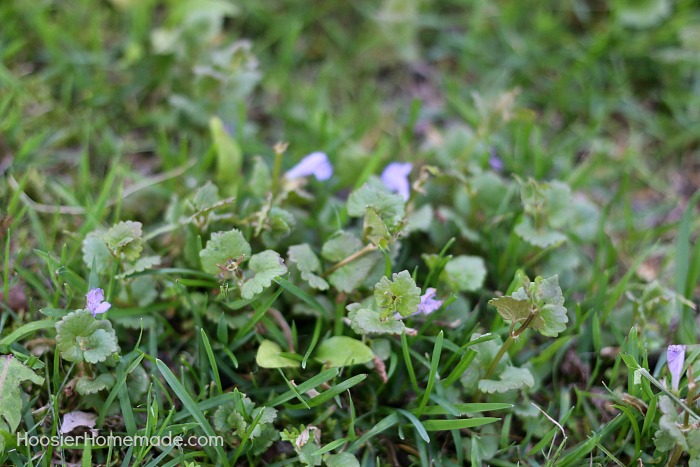
Your lawn is the welcome mat to your home. Everyone strives for the perfect lawn, you know, the one that makes the neighbors green with envy.
Keeping a well maintained lawn can be costly and confusing. You know the basic needs of your lawn. What height to cut your grass for maximum health. How much and when to water your lawn. And of course, the basics of fertilizing your lawn. But have you ever found yourself looking at a weed in your lawn or landscaping and wonder what it is and how do I get rid of it? Well we are here to help you with your lawn weeds identification.
Click here for your FREE garden and landscape journal- the first step to gardening success!
Here are 7 Common Weeds with Identification Pictures for you.
When it comes to controlling weeds in your lawn, knowing what you are trying to kill is more than half the battle. Once you know the weed you can then choose from many options to control them, sometimes if you get it early enough it won’t cost an arm and a leg to get rid of them.
There are many ways to prevent these weeds from getting established in your lawn. Good cultural practices such as not mowing your grass too short and giving your lawn the nutrients it needs throughout the year so your grass can outgrow and compete with the weeds will go a long way to keeping them at levels where you won’t need to spray. And knowing how to choose and apply mulch to your landscape beds goes a long way to keep them nice and tidy.
Now let’s talk about some of the weeds you’ll commonly find and how you can control them.
Here are 7 Common Weeds.
Dandelion
Dandelion is probably the easiest to recognize, it’s leaves are lance-shaped with irregular and jagged edges. And there are few plants that can be identified as quickly with it’s bright yellow flowers, and their seed heads that look like puffballs. They are perennial, which simply means, once a plant establishes it’s self in your lawn it will grow every year unless you take action to control it.
The good news is that Dandelion is fairly easy to control. If you don’t have too many you can pull them by hand by using a weeding tool made for dandelions. If they do get established in your lawn and there are just too many to pull by hand you can control them by spraying or during your fertilizing application. There are pet-safe options available as well.
Creeping Charlie

Commonly found in lawns that are cut too short, Creeping Charlie is probably the hardest weed to get rid of because even a small piece left behind can regrow and make a new plant.
You can identify this groundcover weed by its scalloped leaves and clusters of purple flowers in late spring.
Controlling this weed is difficult, there are few options available that work. Spraying in the spring will only slow the weed down. Fall is the best time to spray and look for a product that contains Dicamba as an active ingredient.
If it invades your garden beds you can kill it by smothering it with a thick layer of newspaper and mulch. Then pull any new growth as soon as you see it.
Oxalis
Also known as Wood Sorrel is another perennial plant that is becoming more common in homeowners yards. This plant is easiest to recognize when it flowers, the most common variety has bright yellow flowers but there is also a variety that has pink/lavender flowers. All varieties have cup-shape flowers with 5 petals. Oxalis also is called “lucky plant”, only because the leaves are shaped like a three-leaf clover. But don’t let your pets eat any parts of the plant because it’s poisonous if they eat enough of it.
Oxalis is one of the more difficult weeds to control so when you do use a product for control of Oxalis choose one that will control it along with another hard-to-control weed, chickweed.
Musk Thistle
Musk Thistle is a biennial plant and because of this many homeowners make the mistake of thinking that if they let a freeze in the fall kill it, it won’t come back the next year. This plant flowers during its’ second year of growth. putting out a dark purple flower.
Musk thistle can be controlled by digging the plant out of your flowerbeds. I’ve found that a tiling spade works best for this job, it helps to get as much of the root as you can. Just be sure to wear heavy gloves when you dig them as the plant has needle like thorns on its’ leaves.
Broadleaf Plantain
Broadleaf Plantain has green, oval to egg-shaped leaves that grow in a rosette. They have thick stems that meet at a base and when the stems are broken, they reveal string-like veins that resemble those in celery.
They can produce a lot of seed so they spread across your property very rapidly. They also spread from one area of your lawn to another by hitching a ride when you mow your lawn.
If you only have a few plants they are easy to dig using a shovel. Best control is done in the fall using a herbicide that is labeled for broadleaf control like 2,4-D and several others.
White Clover
White clover is a creeping perennial broadleaf plant. It grows fairly low to the ground, you could even characterize it as creeping across the ground. Especially mature plants in your lawn that are in high traffic areas or have been mowed several times.
One of the easiest ways to tell clover from similar looking weeds like Oxalis is by looking for a whitish crescent in the center of the leaves.
Controlling clover is difficult and if possible you should dig them out of landscape beds. And in the lawn, it will take several perfectly timed herbicide applications over the course of a couple of years to get rid of a heavy infestation. The same herbicide that you use for Oxalis works on Clover.
White Clover can completely overtake a lawn and smother out any grass. Mowing your grass short promotes clover to take over your lawn.
Wild Violet is a very resourceful and unusual plant. It can have a taproot or a fibrous root system, and also can produce rooting stolons and rhizomes. What does that mean to you the average person? It means it can grow almost anywhere.
The leaves can vary but usually are heart shaped, and the flowers range from white to blue to purple. And the flowers are shaped like pansies.
They can easily spread into turfgrass. You can dig these up to remove them but make sure you remove all the root or they will grow back.
Wild violet can be controlled with the same product and timing as clover.
As you can see some of the most common weeds can be the most difficult ones to get rid of, I suppose that is why they are so common. Just keep in mind that you can prevent or slow the spread of all these weeds by doing the basics.
-
Don’t mow your lawn too short, 3 inches is a good height for most grasses.
-
Fertilize your lawn correctly, at least in the spring and fall.
-
Water wisely, over-watering is just as bad for your lawn as under-watering.
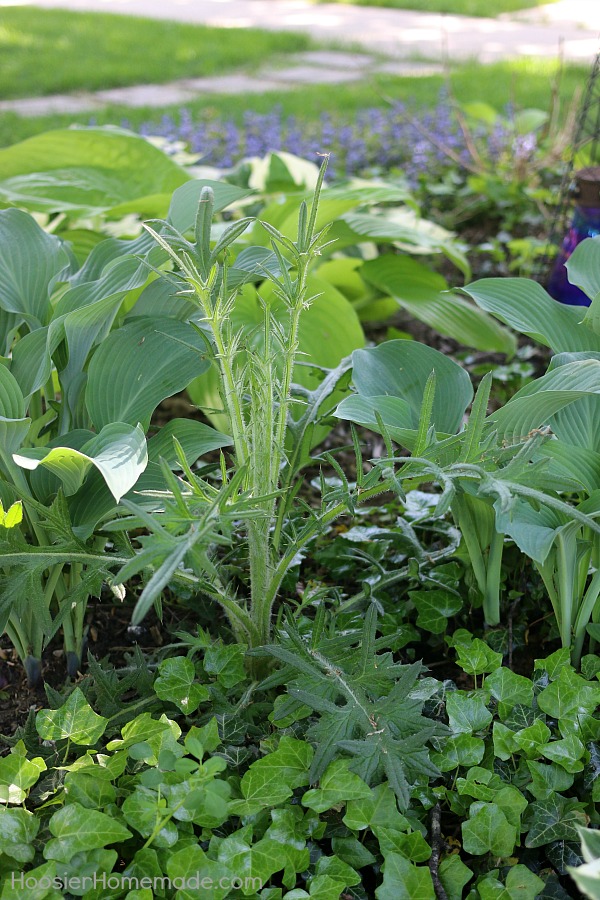

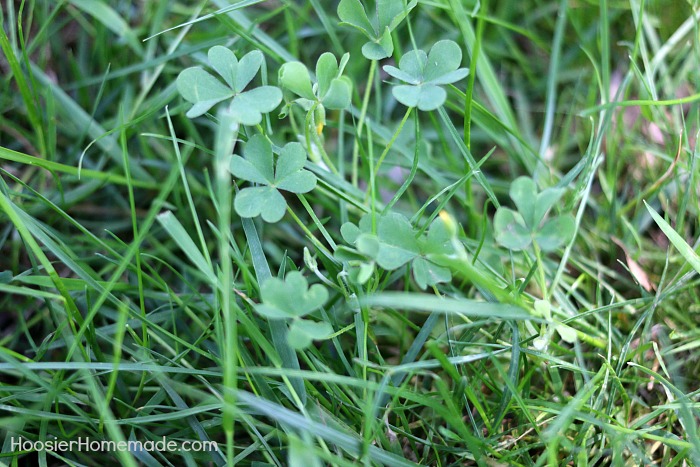
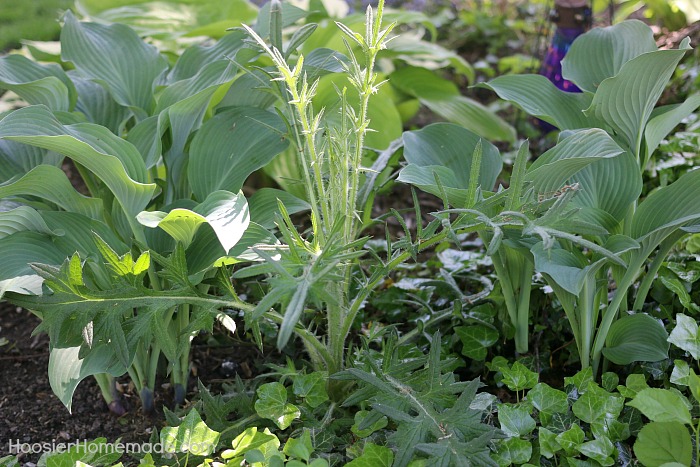
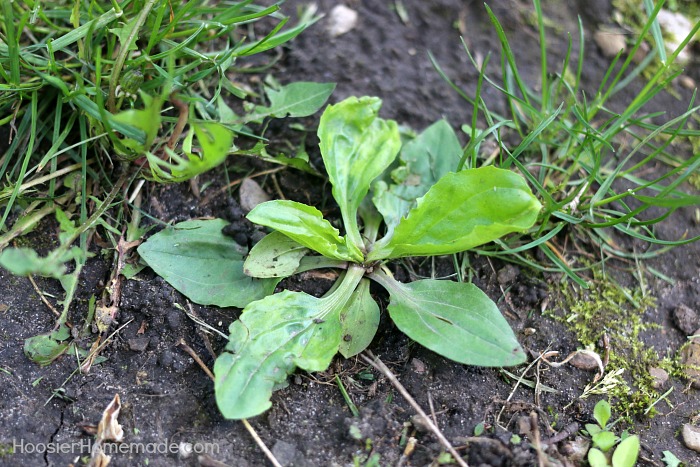
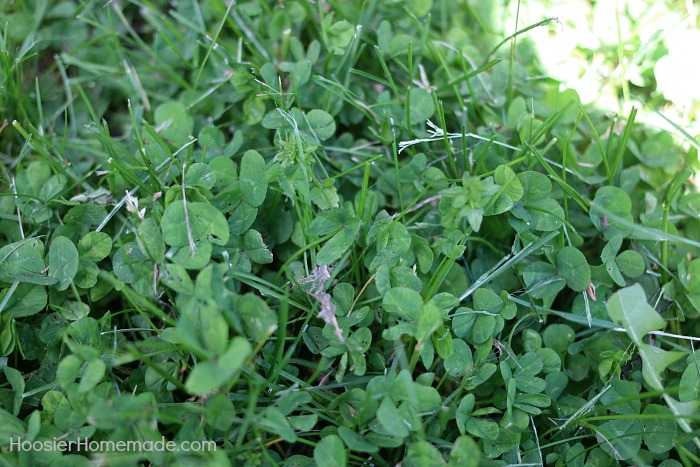

How come there are only 6, not 7, weds cured and discussed?
Actually Joel there are 7 weeds discussed, At the bottom of the article we talk about Wild Violet. I agree that we need to add an updated photo to make it more noticeable. Thanks for keeping me on my toes1
Can White Clover crowd out the Oxalis and Creeping Charlie? Am considering seeding for an ALL white clover lawn.
Yes, when seeded and maintained at a high enough population white clover can out compete most other plants. I would suggest prior to seeding applying a non-selective herbicide to control any established weeds like the oxalis and creeping charlie.
I have a plant that comes back every year. It doesn’t seem invasive but it is attractive with a “V-shaped” dark design on the leaf. I have tried to find out what it is; but no one seems to know. I have never seen a flower on it. When I glance through pictures of wild plants; but the closest thing I have found that looks like this leaf is the red clover. However, the leaf shape is oval shaped. Does anyone have an idea of what it might be?
I’m sorry but I can’t identify it by your description. If you would like, you can send a photo and I’ll take a look.
Doug @ HoosierHomemade.com
Every one of the plants (weeds) shown are not only edible, they are even more nutritious than what most people grow for food, and also have medicinal qualities that are better that what a doctor will prescribe. Do not waste what God has given us. DO NOT spray toxic poisons! Instead do a little research and learn. Then make positive use of these wonderful plants instead of polluting your world with poison.
Hey Chris, thanks for your thoughts. I once ate dandelion greens, a long time ago in the 1970’s. My grandmother made them, they were good and tasted very similar to spinach. Can you provide information on how you have used any of these plants for food or as medicine? I’d love to hear from you.
I’m doing research of just this subject for another article
The information ans advice I put forth here is for your average homeowner who sees the value in a well maintained weed free lawn.
Thanks
Bravo!!! White clover, hairy vetch and many other “weeds” are also great for the soil. (Cover crops) Plants need nitrogen and there’s lots of it in the atmosphere, but most plants can’t take the nitrogen out of the air they need to take it out of the soil. Plants like these have a unique ability to take nitrogen out of the soil and convert it to ammonium nitrate in the soil so other plants can feed on it! It’s truly a wonderful thing . God thought of everything and has made everything with a purpose.
Clover is a weed because the herbicide manufacturers have deemed it such. Perpetrating that idea is a disservice. Before chemical herbicides, clover was a part of grass seed mixes, used to help produce nitrogen rich lawns and soils. Lawns can and do look great with a few varieties of flora growing. Mine, for one. Monochromatic lawns may look good in the ads, but they are boring, are a pain to maintain, and don’t give the natural balance a chance to thrive.
Hey Jim, while I can see where you are coming from with this comment there are many that will disagree with you. The definition for weed taken from the Merriam-Webster dictionary defines a weed as a plant that is not valued where it is growing and is usually of vigorous growth; especially: one that tends to overgrow or choke out more desirable plants. So for your argument, you do place some value on having clover growing in your lawn. That is your personal value but others may not hold the same value as you do. This information is directed towards those that do want, in your words a monochromatic lawn. Thanks for your comment it’s always great to hear other peoples opinions.
Thank you. I agree. Clover is an attractive ground cover and obviously hardy.
Clover is not a weed. Clover nourishes the soil by taking nitrogen from the air and “fixing” it in the soil.
Clover also makes the soil more “friable” and easier to work.
Or you can pay for a commercial fertilizer to artificially fix nitrogen in the soil.
Julie, all the points you made are correct but let me clarify why in a lawn the majority of people do consider Clover to be a weed.
First let’s look at the definition of a weed.
From Merriam-Webster Dictionary https://www.merriam-webster.com/dictionary/weed.
A plant that is not valued where it is growing and is usually of vigorous growth; especially : one that tends to overgrow or choke out more desirable plants (2) : a weedy growth of plants.
In the majority of lawns the desirable plants are various grass species, yet there are certain grass species (i.e. Crabgrass, Quackgrass et al) that are not desirable. The same can be said for broadleaf plant which clovers fit within this category.
So you see to a homeowner, who puts all of his effort into maintaining a beautiful lawn, (which this article is targeted too) Clover is a weed.
A weed, by definition, is a plant you don’t want there. I like clover. I’d like to cover an entire slope with it. It’s a more hardy, attractive and vigorous ground cover than many of the options. I don’t want it in my flower beds. There it is a weed. On my slope it’s a ground cover.
Yes Mark, there are certainly instances where using clover as a ground cover is very desirable. On a slope that is difficult to maintain or areas that are difficult to keep on a routine maintenance schedule clover is an option as well as other ground covers. But is it the first choice for a manicured lawn? No
Thanks for sharing all this information about weeds, now we know why they keep coming back what ever we do and mowing the lawn too short I would never have known!
I’ve never been able to tell what are weeds when they start to come up around the flowers and then they start strangling the plant maybe now I will!
Thanks for sharing!
Hi Jan! Glad it was helpful!
One person’s weeds is another person’s herbs! I actually keep the violets in the garden because they’re pretty, and dandelions nurture early spring bees. As for creeping charlie, it’s eating my strawberry bed alive. Thanks for sharing! #HomeMattersParty
We battle clover and some other weeds every year. At least now I can better identify some of them, and hopefully find a way to get rid of them for good! Thanks for linking up with Merry Monday!
Perhaps one might think of clover as a source of nectar for our endangered bee populations and just enjoy it.
I make a terrificc white clover jelly so not all weeds are totally bad. . I make dandelion as well so
If you can’t beat em do something useful with them! lol
Love that you find a way to make them useful!
LoL that was the stupidest question, I assume that you mean paint on the pesticide for poison ivy.
What do I paint the leaves with, regular house paint ?
Is there a home made recipe for poison ivy. One that grows under a tree, I’d like the recipe not to affect the tree in any way.
Anything that is strong enough to kill the poison ivy, might hurt the tree as well. You can always try to “paint” the leaves or dig up the plant (using gloves of course!).
Pour boiling water over the poison ivy. That will kill it naturally.
use round-up on the poision ivy, just mist the leaves and cover 70% of the plant and it will die without affecting the tree